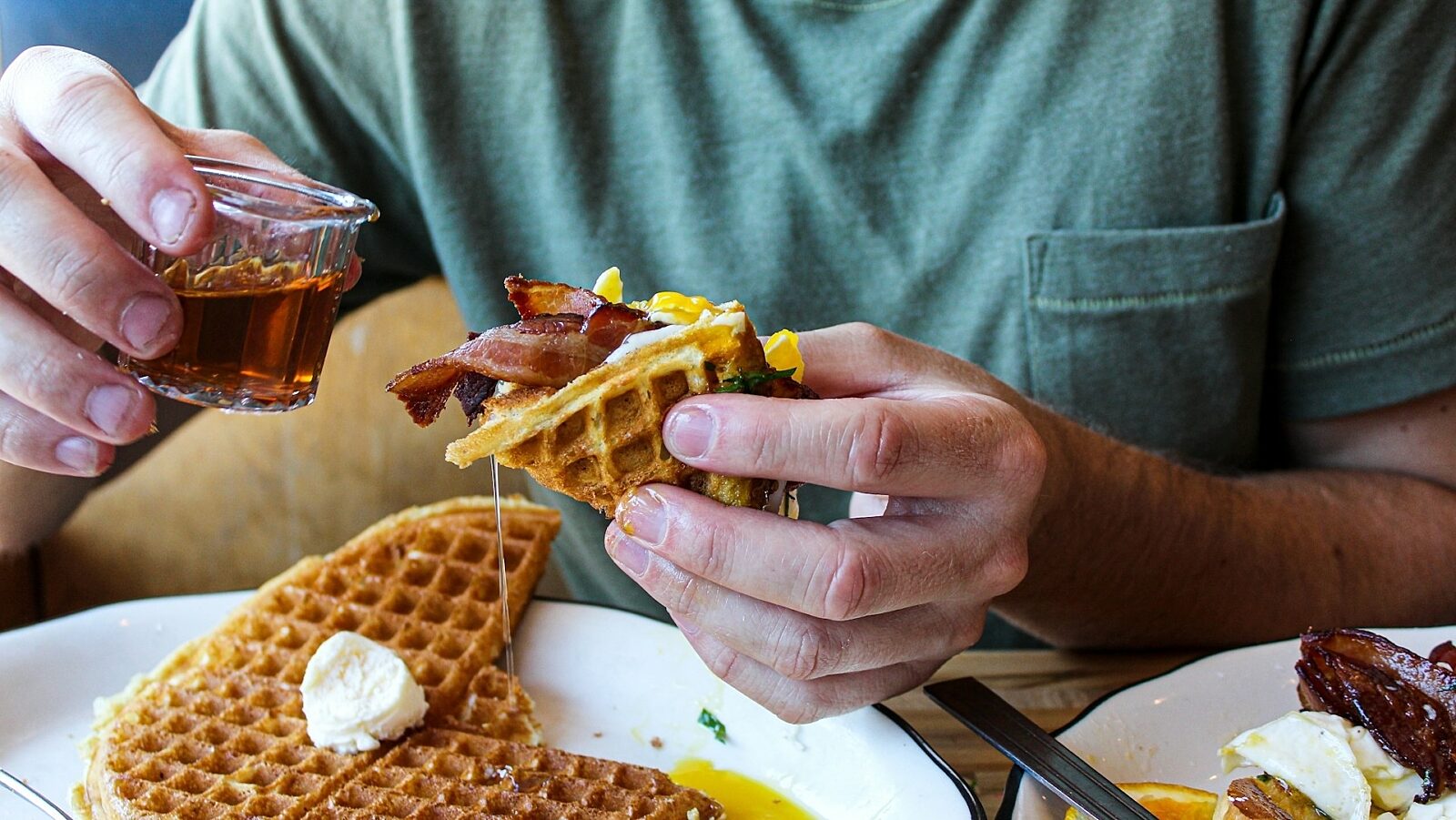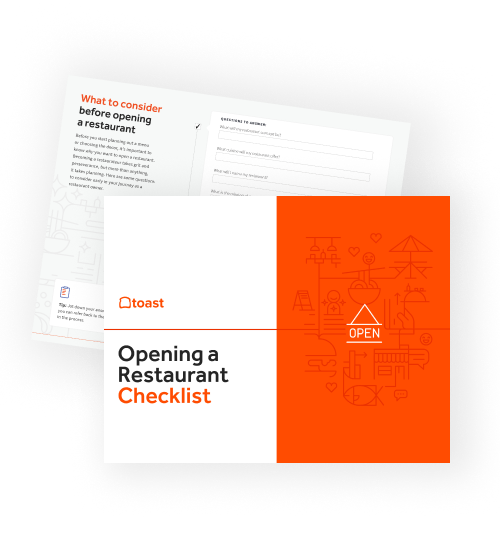
How To Open A Diner: 10 Essential Steps For Launching In 2024
Launching a successful diner requires a unique concept, close attention to detail, and careful financial management. Discover how to open a diner here.

Caroline PriceAuthor


Opening a Restaurant Checklist
So many things go into opening a restaurant. Use this free PDF checklist to set your new restaurant up for success.
Get free downloadDiners are more than just a place to grab a quick meal. In some communities, they’re the cornerstone of a neighborhood and a gathering spot where people come together.
If this sounds like the right business venture for you, we’ve got good news–diners have big revenue potential. IBIS World projects that the nation’s 7,063 diners and breakfast restaurants will generate $14.6 billion in 2024.
On average, that’s nearly $2.1 million in revenue per establishment, with some doing much better and others much worse. However, launching a successful restaurant isn’t easy. In fact, about 30% of restaurants don’t survive after their first year.
So, to ensure your business not only survives but thrives, in this article we’ll walk you through all the key aspects of how to open a diner, from coming up with a unique concept to writing your business plan.
Key takeaways
Conduct market research and analysis to identify gaps in the local market and cater to the needs of your target customers.
To increase repeat business for your diner, it’s essential that you pay careful attention to crafting your brand identity, marketing strategy, interior design, and menu offerings.
Determining your expected expenses and forecasting sales are key for ensuring the profitability and long-term success of your diner.
Writing a business plan for your diner is vital for tying together all the key aspects of your business. It not only serves as your roadmap for success, but is critical to securing funding from lenders or investors.
Use technology, like a comprehensive POS system, to streamline your operations and improve your customer experience from the outset of launching your diner.
How to open a diner in 10 steps
Opening a successful diner requires more than just a passion for the food service industry. You’ll also need a solid business strategy, careful planning, and a deep understanding of your customers’ needs.
To ensure your diner not only opens smoothly but thrives in the long term, you need to approach the process with a clear and comprehensive plan. If you’re committed to creating a beloved community hub that stands the test of time, the following steps are your roadmap to success.
1. Conduct market research and choose a diner format
Choosing the right format for your diner is a foundational decision that impacts every aspect of your business.
To make an informed decision, consider visiting successful diners in your area and analyzing their offerings to identify gaps in the market. For example, if the local market is saturated with traditional diners offering classic American comfort food, you might stand out by introducing a farm-to-table diner concept, or even offering international breakfast options.
Additionally, be sure to conduct research on local demographics, such as:
Age groups
Income levels
Lifestyle preferences
Understanding these factors can help you tailor your diner’s format to your target customers. For example, younger, health-conscious consumers might appreciate a menu focused on organic or plant-based options.
NFL player, Patriot Deatrich Wise, Jr., who invested in Boston-based diner Veggie Galaxy, said in an interview with NBC Boston:
“As a professional athlete, it's hard to ignore the trend towards healthy living in this country, including the explosion of vegetarian and vegan food in the last several years."
These insights from your research will also inform your pricing strategy, helping ensure your offerings are both appealing and accessible to your core audience.
Ultimately, your diner’s format should not only reflect your personal passion, but also cater to the needs and tastes of your prospective customers. This step is crucial because it shapes everything from your menu and interior design to your marketing strategy.
2. Find the right location for your diner
Selecting the perfect location for your diner can make or break your business. As you search for the right spot, be sure to identify areas with:
High foot traffic
Strong visibility
Easy access to parking or public transportation
Once you narrow down your list of potential locations, be sure to visit them at different times of the day to gauge traffic patterns and customer activity.
Lastly, you should inquire about lease terms so you can negotiate terms that are favorable to your long-term business goals. Not only should you think about monthly rent payments, but also clauses related to:
Rent increases
Renewal options
Tenant improvements
3. Craft your brand identity and marketing strategy
Your brand identity is the essence of your diner—it’s what customers will remember and return for. To create a memorable brand identity, begin by crafting a unique brand story that reflects your diner’s mission, values, and personality.
From there, you should aim to develop a cohesive visual identity, including a logo, color palette, and typography that captures the spirit of your diner.
Ultimately, your brand should resonate with your target audience and differentiate you from competitors.
Once you establish your brand identity, create a robust marketing strategy by leveraging both digital and traditional channels. For example:
Build a professional website that showcases your menu, location, and story, and optimize it for search engines to attract local traffic.
Use social media to engage with potential customers, build anticipation for your opening, and maintain ongoing communication.
Consider email marketing campaigns, loyalty programs, and community events to foster customer loyalty and drive repeat business.
4. Develop your diner’s interior design
Your diner’s interior design is a crucial part of your brand image, helping create the right ambiance and customer experience. It’s important to develop a clear vision that aligns with your overall concept, whether it’s nostalgic, retro, or modern.
Overall, your diner design should be both functional and aesthetically pleasing. So, be sure to consider elements like:
Flow of customer and staff traffic
Comfort of your seating options
Lighting, color schemes, and décor elements
Durable materials that can withstand heavy use
Safety and accessibility
Lastly, you might consider working with professional designers or contractors who understand the specific needs of restaurant spaces.
Remember, your interior design should not only attract customers, but also encourage them to linger and return.
5. Create your diner menu
While a strong brand identity is key for driving repeat business, so is the quality of your menu. However, crafting a diner menu that both delights customers and drives profitability is an art and a science.
So, start by brainstorming dishes that align with your diner’s concept and appeal to your target market. To accomplish this, be sure to balance innovation with familiarity. After all, customers expect certain staples from a diner, but unique twists can set you apart.
Once you have a solid list of potential menu items, test your recipes and refine them to ensure customers will love them. You might also consider featuring seasonal menu changes to keep your offerings fresh and exciting.
Additionally, be sure to conduct cost analysis for each menu item to ensure profitability, accounting for key elements like:
Ingredient costs
Preparation time
Portion sizes
You’ll also want to think about the flow of your kitchen operations when designing your menu. For example, offering too many complex dishes can slow down service and increase waste.
Finally, design your menu layout to be visually appealing and easy to navigate, with clear descriptions and pricing that reflect the quality and value of your dishes.
6. Determine your expenses and expected sales forecasts
Now that you’ve got your concept, branding, and menu offerings together, it’s important to focus on the financial side of your business. After all, accurate financial planning is vital for the success of your diner.
To get started, carefully list all your expected expenses, including:
Rent
Utilities
Equipment
Inventory
Labor
Insurance
Marketing
One-time costs, such as renovations or design work
Smaller costs, like office supplies and maintenance, which can add up
With a clear understanding of your expenses, you can also develop realistic sales forecasts based on your:
Menu pricing
Expected customer volume
Average spend per customer
As you develop your forecasts, be sure to use industry benchmarks and market research to inform your projections. Remember, it’s essential to create multiple scenarios—best-case, worst-case, and most-likely—to prepare for different outcomes.
Finally, after you open your diner, be sure to regularly review and update your financial forecasts as you gather real data after opening. This financial discipline will help you manage cash flow, make informed decisions, and stay on course toward profitability.
7. Write your diner’s business plan
After completing the steps above, you can tie everything together with your restaurant’s business plan. This document is your roadmap to success, and creating a detailed and comprehensive plan is a must.
Your diner business plan should clearly lay out your:
Concept, mission, and objectives
Market research, including demographics, competition, and dining trends
Market analysis, explaining how you’ll tailor your offerings to meet your target customers
Step-by-step operational strategy, from sourcing ingredients to managing daily operations
Start-up costs, such as rent, equipment, staff salaries, marketing, and necessary permits
Reaslist sales forecasts and cash flow projections
Contingency plans for potential challenges
Ultimately, this document will not only guide your decisions, but also be instrumental in securing funding from investors or lenders.
Restaurant Business Plan Template
No matter where you’re at in your restaurant ownership journey, a business plan will be your north star. Organize your vision and ensure that nothing is overlooked with this free template.

8. Secure funding
The average cost to launch a restaurant typically ranges from $175,000 to $700,000. However, you can still open a diner with no money by evaluating different funding options, such as:
Traditional bank loans
Small Business Administration (SBA) loans
Personal savings
Investments from friends, family, or private investors
Crowdfunding
After determining which funding method would work best, you’ll need to use your business plan to prepare a compelling pitch.
Your pitch should outline your concept, market opportunity, and financial projections. Additionally, you should demonstrate your understanding of the industry and your ability to execute your plan.
Remember, lenders and investors will be looking for evidence of your commitment, expertise, and potential return on their investment. So, be prepared for thorough due diligence and have all your financial documents, including personal credit history, in order.
9. Obtain licenses and permits
While you should have researched all your licensing and permit requirements when drafting your business plan, now it’s time to actually secure them. Some of the licenses and permits you might need include:
Business license
Health department permits
Food handler’s permits
Zoning permits
Fire department clearances
Liquor license (if you intend to serve alcohol)
Overall, navigating the legal requirements for opening a diner is a critical step that requires meticulous attention to detail. So, be sure to engage with local government offices early in the process to understand the timelines and documentation you’ll need.
It’s also a good idea to consult with an attorney who specializes in restaurant law to ensure you’re fully compliant with all regulations.
Ultimately, securing the right licenses and permits is essential for protecting your business from legal issues. Additionally, it helps establish your credibility and professionalism in the eyes of your customers.
Restaurant Hiring Kit & Templates
Use these free job description, interview, and offer letter templates to improve and standardize the hiring process for your restaurant.

10. Hire your team
Lastly, you’re ready to build a strong and capable team for your diner. In your business plan, you should’ve identified key positions you need to fill, from kitchen staff and servers to managers and support roles.
For each role, it’s important to write detailed job descriptions outlining:
Responsibilities
Qualifications
Required experience
When recruiting, look for candidates who not only have the necessary skills, but also share your passion for food and customer service. Additionally, consider their fit with your diner’s culture and values.
Remember, your hiring process should be thorough. So, think about conducting multiple interviews, checking references, and possibly even holding trial shifts to assess how candidates perform in a real-world setting.
Finally, once you hire your team members, be sure to invest in comprehensive training programs that cover everything from food safety to customer service. This will help ensure consistency and quality in every aspect of your operation.
Overall, developing a positive workplace culture, with clear communication and opportunities for growth, will help you retain top talent. This is essential for putting together a team that’s as committed to your diner’s success as you are.
Open your diner with the right tools
By following the steps above, you’ll be well on your way to opening a successful diner that customers love. However, to take your diner to the next level, it’s vital that you have the right tools from the outset.
For example, with Toast’s POS system, you can simplify and streamline your operations with features like inventory management, staff scheduling, and more.
Likewise, you can improve your customer experience with essential tools like online ordering, loyalty programs, and the ability to process a wide array of different payment methods.
To discover all the ways Toast can help you launch a better diner, be sure to check out all the great features!
Is this article helpful?
DISCLAIMER: This information is provided for general informational purposes only, and publication does not constitute an endorsement. Toast does not warrant the accuracy or completeness of any information, text, graphics, links, or other items contained within this content. Toast does not guarantee you will achieve any specific results if you follow any advice herein. It may be advisable for you to consult with a professional such as a lawyer, accountant, or business advisor for advice specific to your situation.
Subscribe to On the Line
Sign up to get industry intel, advice, tools, and honest takes from real people tackling their restaurants’ greatest challenges.
